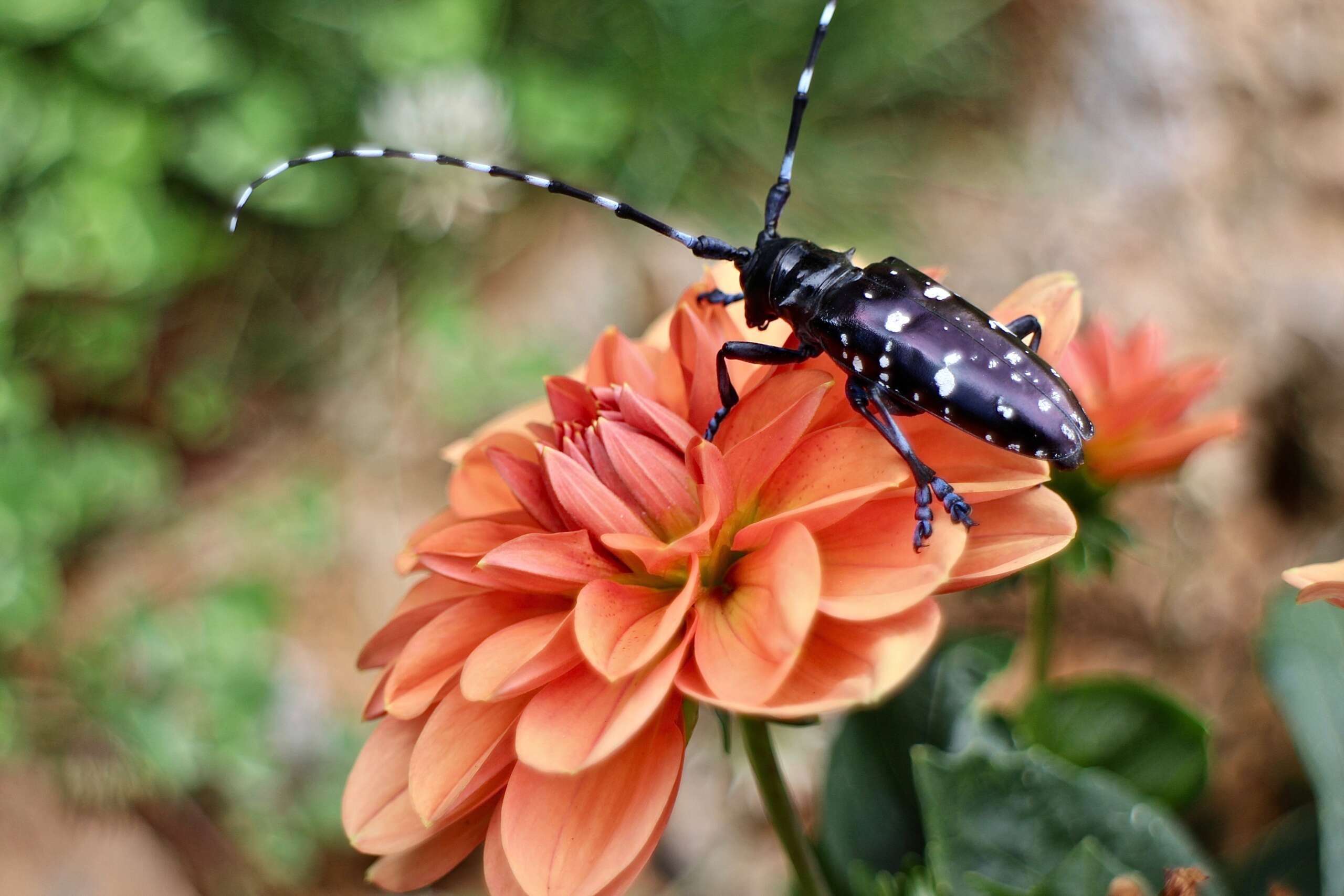
Protecting Ohio’s Trees: Battling Invasive Asian Longhorned Beetles
Introduction
Ohio’s lush forests and verdant landscapes are under threat from a small but formidable enemy: the Asian Longhorned Beetle (ALB). These invasive insects pose a significant risk to our state’s ecosystem, economy, and natural beauty. In this comprehensive guide, we’ll explore the impact of ALBs on Ohio’s trees and forests, learn how to identify these pests, understand the measures being taken to combat them, and discover how you can contribute to protecting our precious woodland resources.
What Are Asian Longhorned Beetles?
Asian Longhorned Beetles (Anoplophora glabripennis) are invasive wood-boring insects native to China and Korea. Accidentally introduced to North America through wood packing materials, these beetles have become a serious threat to hardwood forests in several U.S. states, including Ohio.
Key Characteristics of Asian Longhorned Beetles:
- Size: Adults are approximately 1-1.5 inches long
- Color: Glossy black body with irregular white spots
- Antennae: Distinctively long, with black and white bands
- Legs: Often have a bluish tinge
For more detailed information on ALB identification, visit the USDA’s Asian Longhorned Beetle Information Page.
The Destructive Impact of Asian Longhorned Beetles
Tree Damage and Mortality
ALBs cause severe damage to hardwood trees through their feeding and reproductive behaviors:
- Adult females chew depressions in tree bark to lay eggs.
- Larvae hatch and bore deep into the tree, creating extensive tunnels.
- This internal damage disrupts the tree’s vascular system, often leading to death.
Preferred Host Trees
While ALBs can infest various hardwood species, they show a preference for:
- Maple trees (Acer spp.)
- Birch trees (Betula spp.)
- Willow trees (Salix spp.)
- Elm trees (Ulmus spp.)
- Horse chestnut trees (Aesculus spp.)
Ecological and Economic Consequences
The infestation of ALBs in Ohio’s forests has far-reaching implications:
- Biodiversity Loss: Many wildlife species depend on these trees for habitat and food.
- Climate Impact: Fewer trees mean reduced carbon sequestration and oxygen production.
- Economic Losses: The timber industry and tourism sector may suffer significant financial setbacks.
- Urban Landscape Changes: Infestations in city parks and streets can alter the aesthetic and functional benefits of urban forests.
Asian Longhorned Beetles in Ohio: Current Situation
Ohio first detected ALB infestations in 2011, primarily in Clermont County. Since then, the Ohio Department of Agriculture (ODA) has been working diligently to contain and eradicate these pests.
Affected Areas
As of 2023, ALB infestations have been confirmed in:
- Clermont County
- Tate Township
- East Fork State Park
For the most up-to-date information on affected areas, visit the Ohio Department of Agriculture’s ALB Program Page.
Strategies to Combat Asian Longhorned Beetles
Ohio has implemented a multi-faceted approach to manage and eradicate ALB populations:
1. Early Detection and Surveillance
- Regular tree surveys in high-risk areas
- Use of pheromone traps to attract and monitor beetle populations
- Deployment of specially trained detection dogs
2. Quarantine and Regulation
- Establishment of quarantine zones to prevent the movement of infested wood
- Strict regulations on the transportation of firewood and other wood products
3. Tree Removal and Destruction
- Infected trees are removed and properly disposed of to prevent further spread
- Wood chipping and incineration are common disposal methods
4. Chemical Treatments
- Systemic insecticides may be used to protect high-value trees in certain situations
- Treatments are administered by certified professionals to ensure safety and efficacy
5. Public Education and Outreach
- Community workshops and informational campaigns to raise awareness
- Training programs for volunteers to assist in early detection efforts
How You Can Help Protect Ohio’s Trees
Public participation is crucial in the fight against ALBs. Here’s how you can contribute:
- Learn to Identify ALBs: Familiarize yourself with the appearance of adult beetles, exit holes, and signs of infestation.
- Report Sightings: If you suspect an ALB infestation, report it immediately to the Ohio Department of Agriculture or call 1-866-702-9938.
- Don’t Move Firewood: Buy and burn firewood locally to prevent the spread of ALBs and other pests.
- Inspect Your Trees: Regularly check trees on your property for signs of ALB activity, especially during summer months when adults are most active.
- Spread Awareness: Share information about ALBs with friends, family, and neighbors to expand the network of vigilant observers.
- Support Local Efforts: Participate in community tree planting events and support organizations working to preserve Ohio’s forests.
When to Seek Professional Help
While community efforts are invaluable, certain situations require expert intervention:
- Suspected ALB infestation on your property
- Concerns about the health of trees in your area
- Need for preventative treatments against invasive pests
Expert Assistance from Pest Asset
Pest Asset, a leading pest control company in Ohio, specializes in managing multiple pests. Their team of certified professionals offers:
- Free property inspections
- Customized treatment plans
- Expert advice on tree health and pest prevention
For professional assistance, contact Pest Asset at (440) 363-6593 or visit pestasset.com to schedule a consultation.
Conclusion: A Collective Effort to Preserve Ohio’s Forests
The battle against Asian Longhorned Beetles in Ohio is ongoing, but with concerted efforts from government agencies, pest control professionals, and informed citizens, we can protect our state’s precious forest resources. By staying vigilant, reporting sightings, and supporting eradication efforts, each of us plays a vital role in preserving Ohio’s natural heritage for future generations.
Remember, the key to successful ALB management lies in early detection and swift action. Together, we can ensure that Ohio’s diverse and beautiful forests continue to thrive, supporting our ecosystem, economy, and quality of life for years to come.
Additional Resources
- USDA National Invasive Species Information Center – Asian Longhorned Beetle
- Ohio Department of Natural Resources – Forest Health
- Don’t Move Firewood Campaign
- Emerald Ash Borer Information Network (Another invasive beetle affecting Ohio’s trees)
By staying informed and taking action, we can all contribute to the protection and preservation of Ohio’s magnificent forests against the threat of Asian Longhorned Beetles and other invasive species.

